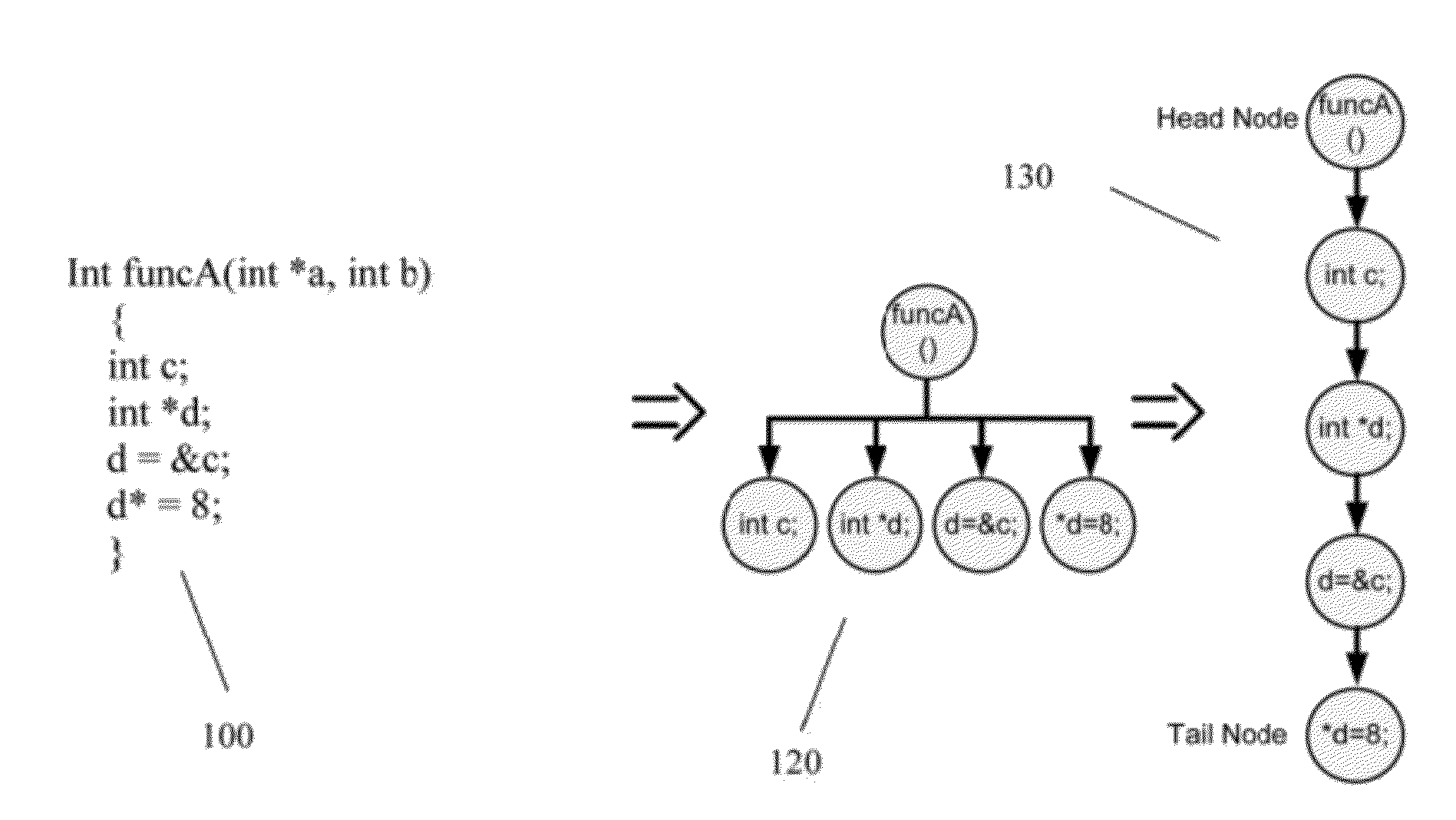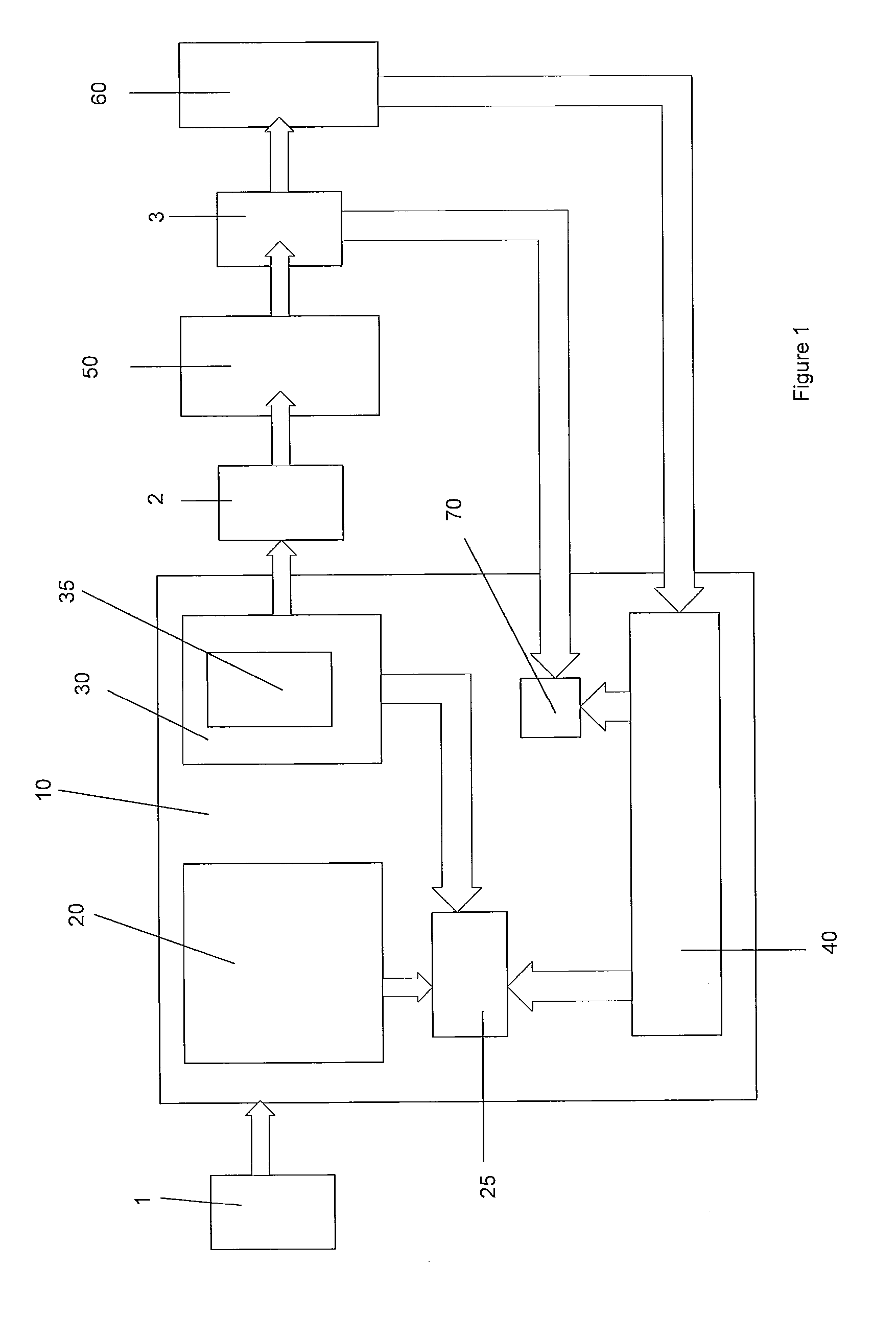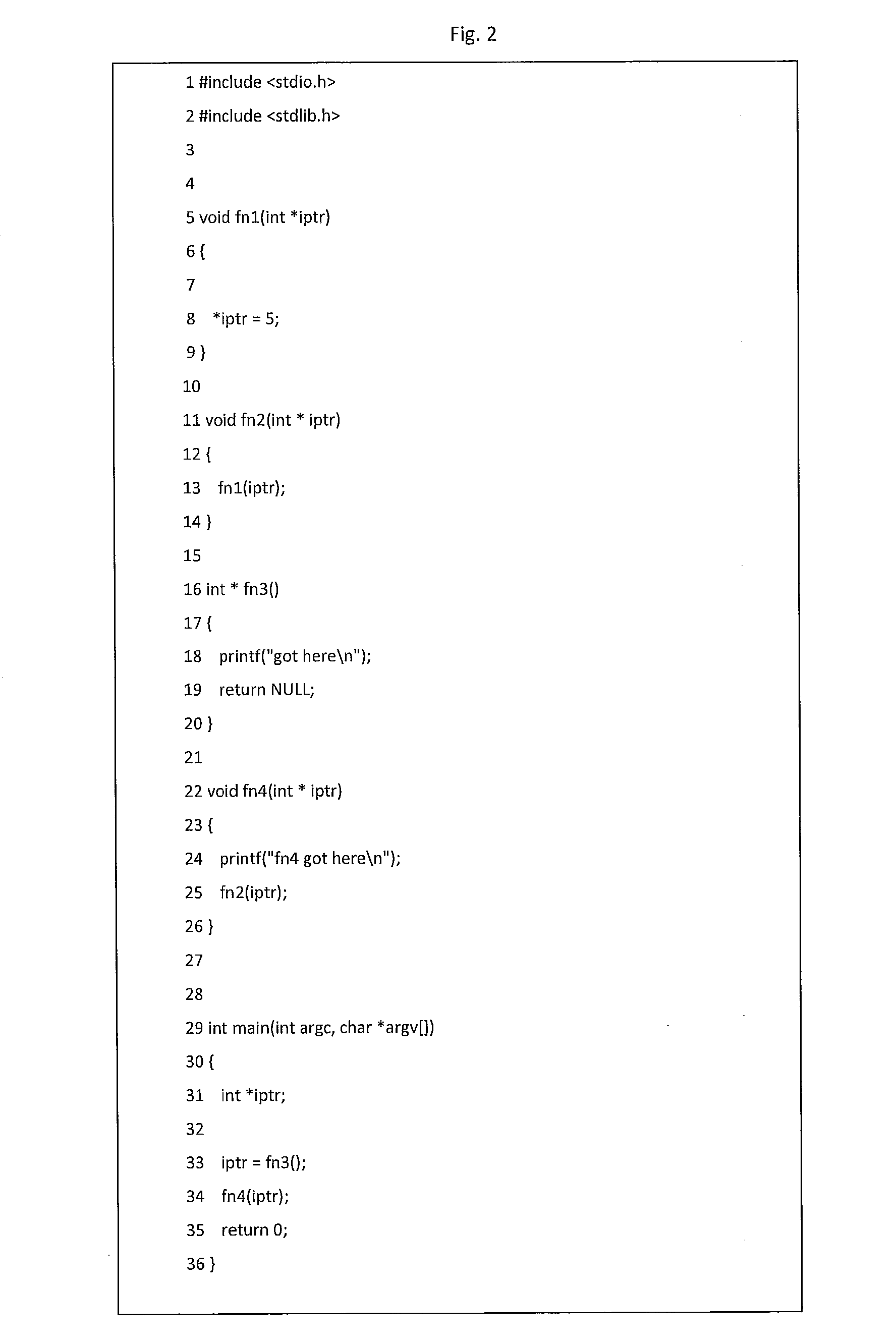Automated debugging system and method
a debugging system and automatic technology, applied in the field of debugging system and method, can solve problems such as code problems, mistakes and unexpected events, and debugging problems faced by developers worldwide, and achieve the effects of reducing the amount of output data produced, accurately determining, and effectively automating the tracing process
- Summary
- Abstract
- Description
- Claims
- Application Information
AI Technical Summary
Benefits of technology
Problems solved by technology
Method used
Image
Examples
Embodiment Construction
[0061]FIG. 1 is a schematic diagram of a debugging system according to an embodiment of the present invention.
[0062]The debugging system 10 includes a static analysis system 20, an instrumentation system 30 and a post-execution analysis system 40.
[0063]In use, the debugging system performs static analysis on computer program code 1 prior to compilation to generate static analysis data 25. Dependent on the static analysis data 25, the code is instrumented by the instrumentation system 30. The instrumented code 2 includes triggers for markers to be generated when a predetermined point in the code is reached during execution. The markers are uniquely labelled and the associated triggers are inserted by the instrumentation system 30 at points in the code determined from the static analysis data 25.
[0064]At execution time, the instrumented code 2 behaves in exactly the same way as the un-instrumented code 1, except for the fact that it records which parts of the software are executing an...
PUM
 Login to View More
Login to View More Abstract
Description
Claims
Application Information
 Login to View More
Login to View More - R&D
- Intellectual Property
- Life Sciences
- Materials
- Tech Scout
- Unparalleled Data Quality
- Higher Quality Content
- 60% Fewer Hallucinations
Browse by: Latest US Patents, China's latest patents, Technical Efficacy Thesaurus, Application Domain, Technology Topic, Popular Technical Reports.
© 2025 PatSnap. All rights reserved.Legal|Privacy policy|Modern Slavery Act Transparency Statement|Sitemap|About US| Contact US: help@patsnap.com



